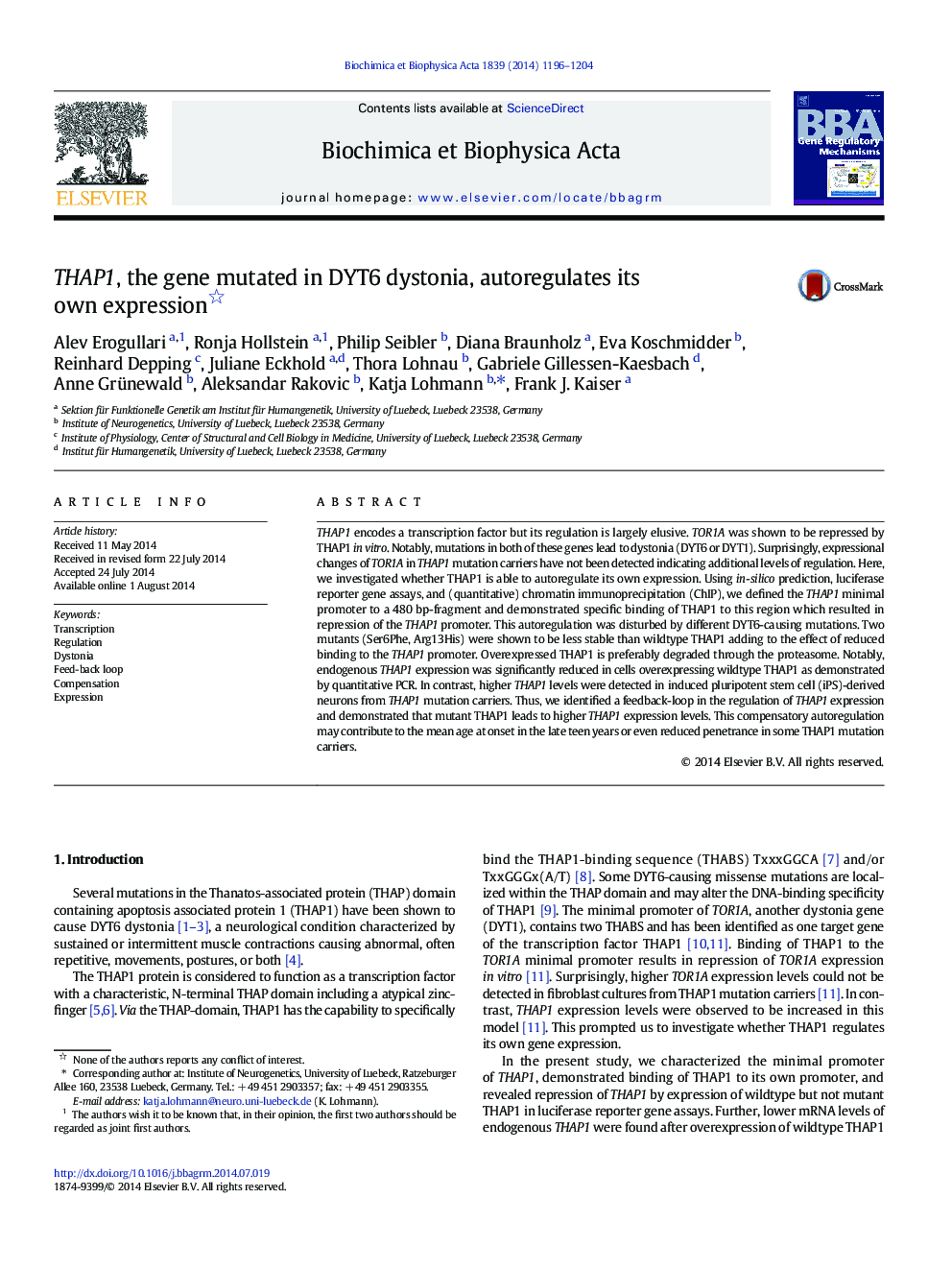| Article ID | Journal | Published Year | Pages | File Type |
|---|---|---|---|---|
| 10799164 | Biochimica et Biophysica Acta (BBA) - Gene Regulatory Mechanisms | 2014 | 9 Pages |
Abstract
THAP1 encodes a transcription factor but its regulation is largely elusive. TOR1A was shown to be repressed by THAP1 in vitro. Notably, mutations in both of these genes lead to dystonia (DYT6 or DYT1). Surprisingly, expressional changes of TOR1A in THAP1 mutation carriers have not been detected indicating additional levels of regulation. Here, we investigated whether THAP1 is able to autoregulate its own expression. Using in-silico prediction, luciferase reporter gene assays, and (quantitative) chromatin immunoprecipitation (ChIP), we defined the THAP1 minimal promoter to a 480Â bp-fragment and demonstrated specific binding of THAP1 to this region which resulted in repression of the THAP1 promoter. This autoregulation was disturbed by different DYT6-causing mutations. Two mutants (Ser6Phe, Arg13His) were shown to be less stable than wildtype THAP1 adding to the effect of reduced binding to the THAP1 promoter. Overexpressed THAP1 is preferably degraded through the proteasome. Notably, endogenous THAP1 expression was significantly reduced in cells overexpressing wildtype THAP1 as demonstrated by quantitative PCR. In contrast, higher THAP1 levels were detected in induced pluripotent stem cell (iPS)-derived neurons from THAP1 mutation carriers. Thus, we identified a feedback-loop in the regulation of THAP1 expression and demonstrated that mutant THAP1 leads to higher THAP1 expression levels. This compensatory autoregulation may contribute to the mean age at onset in the late teen years or even reduced penetrance in some THAP1 mutation carriers.
Related Topics
Life Sciences
Biochemistry, Genetics and Molecular Biology
Biochemistry
Authors
Alev Erogullari, Ronja Hollstein, Philip Seibler, Diana Braunholz, Eva Koschmidder, Reinhard Depping, Juliane Eckhold, Thora Lohnau, Gabriele Gillessen-Kaesbach, Anne Grünewald, Aleksandar Rakovic, Katja Lohmann, Frank J. Kaiser,
